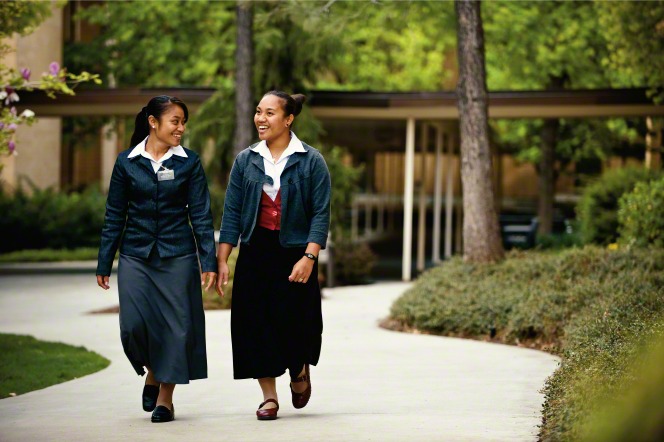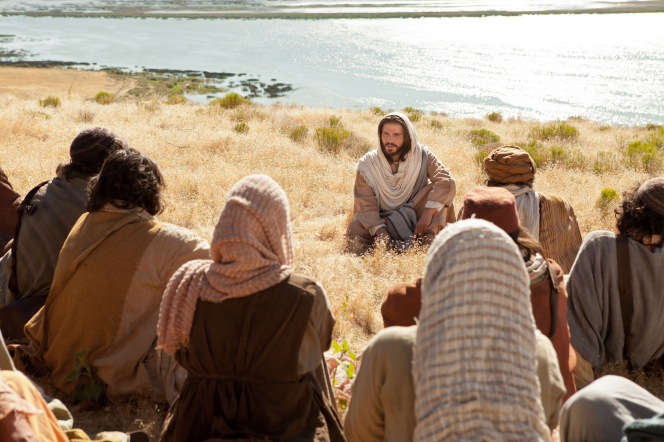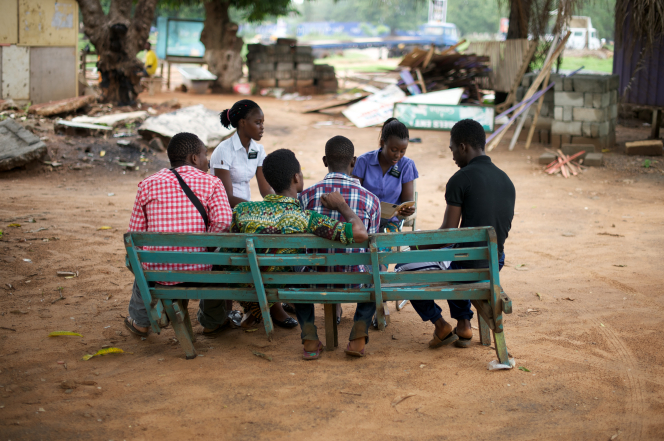I was recently thinking about some of the significant programmatic changes that have happened in the Church of Jesus Christ of Latter-day Saints in the last few years. People have evaluated them in various ways and labeled them a success or failure, but popular opinion often swings on short-term thinking. For example, when, in October 2012, President Monson announced changes in the age limits for full-time missions, some made the coupled assumptions that this would either result in a proportional increase in convert baptisms or it should be considered a failure. It did not lead to a large increase in convert baptisms and some considered it only on that basis; however, this hasty act of labeling ignores a foundational bad assumption as well as a host of secondary effects that potentially act on a much longer time scale and are interesting in their own right.
The problem started with faulty assumptions. The first of these is that those who convert are in some sense “caused” by missionaries rather than merely facilitated. It is rooted at least partly in the experiences of a past era in which people in the United States and other sociopolitically similar areas could be reached by door-to-door salesmen and, correspondingly, that an increase in the number of people engaged in these activities would result in a proportionate gain in initial interest, teaching, baptisms and so forth. This assumption of course ignores years of entreaties that finding is the duty of the members of the Church while teaching is the responsibility of the full-time missionaries and that we should cease praying only that the missionaries find the honest in heart but rather that we should instead pray to be able to open our own mouths to share the gospel and invite others to come unto Christ. The reality is then that the model upon which the assumption (that more missionaries would lead to proportionately more convert baptisms) was based was largely invalid and the members of the Church should realize that missionary finding only ever constitutes a modest portion of the the success of the Church’s missionary efforts. The reality is members letting their light shine, setting examples of good works in the world and sharing the gospel in their individual circumstances, combined with a certain number who find the Church of Jesus Christ through their own individual searching are together a far more stable and effective source of interest.
The second mistaken assumption—that a lack of immediate increase in conversion represents a failure—is even more deserving of attention. To see why, it is important to recognize what benefits the experience of a mission provides. Missionary service often helps members who might otherwise have been handicapped by shyness gain experience talking with (gasp) strangers, sometimes in an unfamiliar language. It also requires them to build relationship skills for interacting with leaders, companions and those they teach, forces them to shop, cook and clean for themselves, manage their funds and otherwise assume some of the burdens of adult life in a relatively safe, failure-tolerant environment.
These experiences have real-world consequences. According to at least one study (https://rsc.byu.edu/archived/shield-faith/8-family-life), RM men are more likely to marry, stay married and, if divorced, remarry than non-RMs, who in turn are still better off in each of these parameters than the population at large. The benefits are less clear for women, who at the time of the survey had a higher age limit which complicates comparison because they were a survivor population. Both male and female RMs are also much more likely to marry in the Church and enjoy a Temple sealing to their spouse. RM men and women are less likely to divorce, RM men have slightly higher fertility rates than non-RM men (extra 4/9 of a child), while the trend is slightly reversed for women (-1/9 of a child) in data from before the age change where they married later on average. Both male and female RMs are more likely to hold family prayer, family home evening and family scripture study. They are also more likely to have received undergraduate and advanced education than the general population (https://rsc.byu.edu/archived/shield-faith/9-missionary-service) and also appear to enjoy somewhat higher levels of income.
 Now, some of these benefits may be appearing because of selection bias—those who were more capable and religious chose to serve missions—and because serving a full mission indicates a certain level of mental and physical fitness, but among those who serve missions there seems to be a frequently expressed view that the experience was among the more transformative of their lives. With more young men and young women serving missions these benefits will probably accrue to a larger portion of the rising generation. I am especially interested in the effect of the age change on sister missionaries. In many of the above statistics (which come from before the age change) the sister missionaries have a substantially differing set of selection biases than the brothers. Under the previous rule set, the sisters were all 22.5 or older upon completion of their missions while now the minimum age at completion will be 20.5. Combined with the change in selection pressures from the lower minimum age at start of mission, it will be interesting to see how stats for sister RMs compare before and after the change. The change I am most anticipating is, however, of a different character.
Now, some of these benefits may be appearing because of selection bias—those who were more capable and religious chose to serve missions—and because serving a full mission indicates a certain level of mental and physical fitness, but among those who serve missions there seems to be a frequently expressed view that the experience was among the more transformative of their lives. With more young men and young women serving missions these benefits will probably accrue to a larger portion of the rising generation. I am especially interested in the effect of the age change on sister missionaries. In many of the above statistics (which come from before the age change) the sister missionaries have a substantially differing set of selection biases than the brothers. Under the previous rule set, the sisters were all 22.5 or older upon completion of their missions while now the minimum age at completion will be 20.5. Combined with the change in selection pressures from the lower minimum age at start of mission, it will be interesting to see how stats for sister RMs compare before and after the change. The change I am most anticipating is, however, of a different character.
I look forward to meeting the generation of children raised by an increasing portion of RM parents. Parents that learned how to teach the gospel effectively on their missions engage in more teaching in the home, as we’ve seen. With the recent change to the structure of church meetings and the recent Come Follow Me home study program, there will be an increased focus on gospel study in the home. These recent changes interact with the timing of the earlier policy adjustment in an interesting way. Starting in October 2012 there was a substantially greater portion of sisters participating in missionary service. This cohort completed their missions no earlier than (for a normal length mission assuming no other intervening delays) April 2014. Under these assumptions, none of them has a child born before January 2015 (though if they were born on this date, well, life moves fast in Provo https://www.youtube.com/watch?v=ldx_zhmM7bU). Thus none of this cohort has a child older than 3, but many likely have children a bit younger, so the timing of the increased home focus comes at an ideal time to make use of the increased average teaching capabilities of the next generation of fathers and the step-change increase in this capability set among mothers. These experiences further prepare them to discuss the gospel and teach the next generation more effectively than ever before. What will the long-term effect of such a change in policy in the Church? I don’t know for sure, but I’m looking forward to seeing it for myself.
—
Hales Swift holds M.S. and Ph.D. degrees from Purdue University in Mechanical Engineering and Aeronautical and Astronautical Engineering, respectively, as well as a B.S. in Applied Physics from Brigham Young University. His current work involves design of phononic metamaterials. He is an author or coauthor of works on jet noise, sound quality and community noise issues. He volunteers with FairMormon, Book of Mormon Central and the Interpreter Foundation in a variety of capacities including reviewing articles, producing videos and participation in the Interpreter radio show. He enjoys swing dancing and was once referred to as the “Charleston King” by a professional instructor. He served a mission in the Ohio, Cincinnati Mission and presently serves as primary pianist and Webelos leader. He is also a husband and father of three.
The post Church Developments and Their Timescales appeared first on FairMormon.
Continue reading at the original source →









